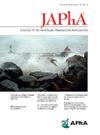A cross-sectional evaluation of college students' access to contraception in North Carolina
IF 2.5
4区 医学
Q3 PHARMACOLOGY & PHARMACY
Journal of the American Pharmacists Association
Pub Date : 2025-07-23
DOI:10.1016/j.japh.2025.102488
引用次数: 0
Abstract
Background
Unintended pregnancies in college-aged women can negatively impact well-being as well as educational and economic attainment. Despite this, availability of contraception is inconsistent on college and university campuses.
Objective
The purpose of this study was to determine what barriers college students experience when accessing contraception.
Methods
College students at 2 public universities in North Carolina were invited to participate in an online survey via flyers, emails, and social media posts. The survey assessed participant demographics and experiences obtaining contraceptives. Descriptive statistics were used to characterize demographics and chi-square or Fisher exact test, Student t-tests, and Mann-Whitney U tests, as appropriate, were used to compare responses between the 2 universities.
Results
One hundred and ninty-five college students responded to the survey. Three out of four respondents reported that they were prescribed contraception by a health care professional off campus, and 79% remained on their parents' insurance. Eighteen percent of respondents reported difficulty obtaining contraception in the previous year and 26% had gone without birth control in the previous year. Barriers to contraception access included difficulties getting refills from providers, inconvenient hours of community pharmacies, transportation, cost, and social stigma. One in ten students reported paying out of pocket for contraception to avoid parental judgment. The most frequently used contraceptive method was the combined hormonal contraceptive pill followed by condoms. There were no clinically significant differences in experiences obtaining birth control between the 2 institutions.
Conclusion
College-aged women experience challenges obtaining contraception, creating opportunities for birth control pharmacists to serve this population in states that authorize pharmacist-prescribed hormonal contraception.
北卡罗莱纳州大学生避孕可及性的横断面评价
背景:大学年龄女性的意外怀孕会对她们的健康、教育和经济成就产生负面影响。尽管如此,在学院和大学校园里,避孕措施的可获得性是不一致的。目的:本研究的目的是确定大学生在避孕时遇到的障碍。方法:邀请北卡罗莱纳州两所公立大学的大学生通过传单、电子邮件和社交媒体帖子参与一项在线调查。调查评估了参与者的人口统计和获得避孕药具的经验。描述性统计用于描述人口统计学特征,卡方检验或Fisher精确检验、学生t检验和Mann-Whitney U检验(如适用)用于比较两所大学之间的反应。结果:195名大学生参与调查。四分之三的受访者报告说,他们是由校外的医疗保健专业人员开的避孕处方,79%的人仍然使用父母的保险。18%的受访者表示在过去一年中难以获得避孕措施,26%的人在过去一年中没有采取避孕措施。获得避孕药具的障碍包括难以从供应商那里获得补充药具、社区药房的时间不方便、交通、成本和社会耻辱。十分之一的学生报告说,他们自掏腰包避孕,以避免父母的批评。最常用的避孕方法是联合激素避孕药,其次是避孕套。在两个机构之间获得节育的经验没有临床显着差异。结论:大学年龄的女性在获得避孕方面遇到了挑战,这为节育药剂师在授权药剂师处方激素避孕的州为这一人群服务创造了机会。
本文章由计算机程序翻译,如有差异,请以英文原文为准。
求助全文
约1分钟内获得全文
求助全文
来源期刊
CiteScore
3.30
自引率
14.30%
发文量
336
审稿时长
46 days
期刊介绍:
The Journal of the American Pharmacists Association is the official peer-reviewed journal of the American Pharmacists Association (APhA), providing information on pharmaceutical care, drug therapy, diseases and other health issues, trends in pharmacy practice and therapeutics, informed opinion, and original research. JAPhA publishes original research, reviews, experiences, and opinion articles that link science to contemporary pharmacy practice to improve patient care.

 求助内容:
求助内容: 应助结果提醒方式:
应助结果提醒方式:


